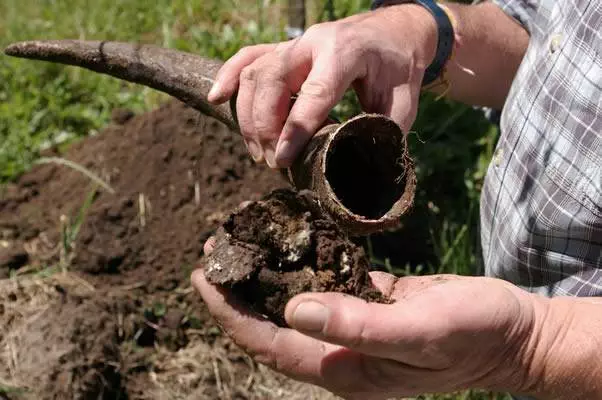Weird Winemaking: Here’s Some of the Strangest Biodynamic Wine-Making Practices
Biodynamic wines, produced in accordance with the practices of biodynamic agriculture, are a popular if controversial subset of the organic wine genre. Grape-growers who practice biodynamics treat the soil, plants, and animals in a vineyard as one complete self-sustaining system.
To the layman, some biodynamic practices can be considered pretty strange. Despite the fact that its detractors liken the field of biodynamics to little more than silly, useless voodoo/homeopathy/magic tricks, plenty of studies have been done to show its efficacy. Many highly acclaimed biodynamic wineries throughout the world add empirical evidence in its favor.

credit: wineanorak.com
Whether you believe that biodynamic farming improves the contents of your wine glass or not, it is fascinating (though not necessarily appetizing) to take an in-depth look at a few of the different techniques utilized in the process:
Preparation 500
A cow horn filled with cow manure is buried 16-18 inches deep in the soil during the winter, when vines are dormant. The manure, which must come from a lactating cow, is said to bring calcium processes to the preparation. Eventually, after the horn is dug up, its contents are mixed with water and sprayed on the soil four times a year, always in the afternoon and during the descending phase of the moon.
Function: Promotes root activity and stimulates microbiotic life in the soil.
Preparation 502
Yarrow, a sweet-smelling, herbal plant, is sheathed inside a stag’s bladder, which is hung in the warm summer sun. It is buried throughout the winter, and dug up the following spring. The bladder is then discarded, but its contents are used as compost.
Function: Helps control the breakdown of the manures and compost, helping to make trace elements more available to the plant. Important for reproduction and growth.
Preparation 505
The bark of an oak tree is grated into a powder in Autumn, and placed into the skull of a sheep or cow. Don’t worry, it is essential that the skull be very clean! The skull is stored in a barrel filled with running water and rotted vegetation for a period of six months, during which time the oak bark goes through the process of fermentation. By the time this phase is complete, the skull will quite likely no longer be very clean. Also, unsurprisingly, it may smell a bit! Alas, fourteen days of stirring the preparation will result in an inoffensive, sweet aroma.
Function: Works strongly with calcium, helps to combat plant diseases (especially fungus), and controls rampant growth.
If you’re feeling skeptical at this point, you’re not alone!
But before writing off biodynamics, you may want to experience its results for yourself.
French winemakers in particular have achieved great success using these unconventional methods. Notable producers include Nicolas Joly and Chateau de la Roche-aux-Moines in the Loire Valley, Maison Chapoutier in the Rhône Valley, Domaine Zind-Humbrecht in Alsace, and Domaine Leroy in Burgundy.

Leave a Reply